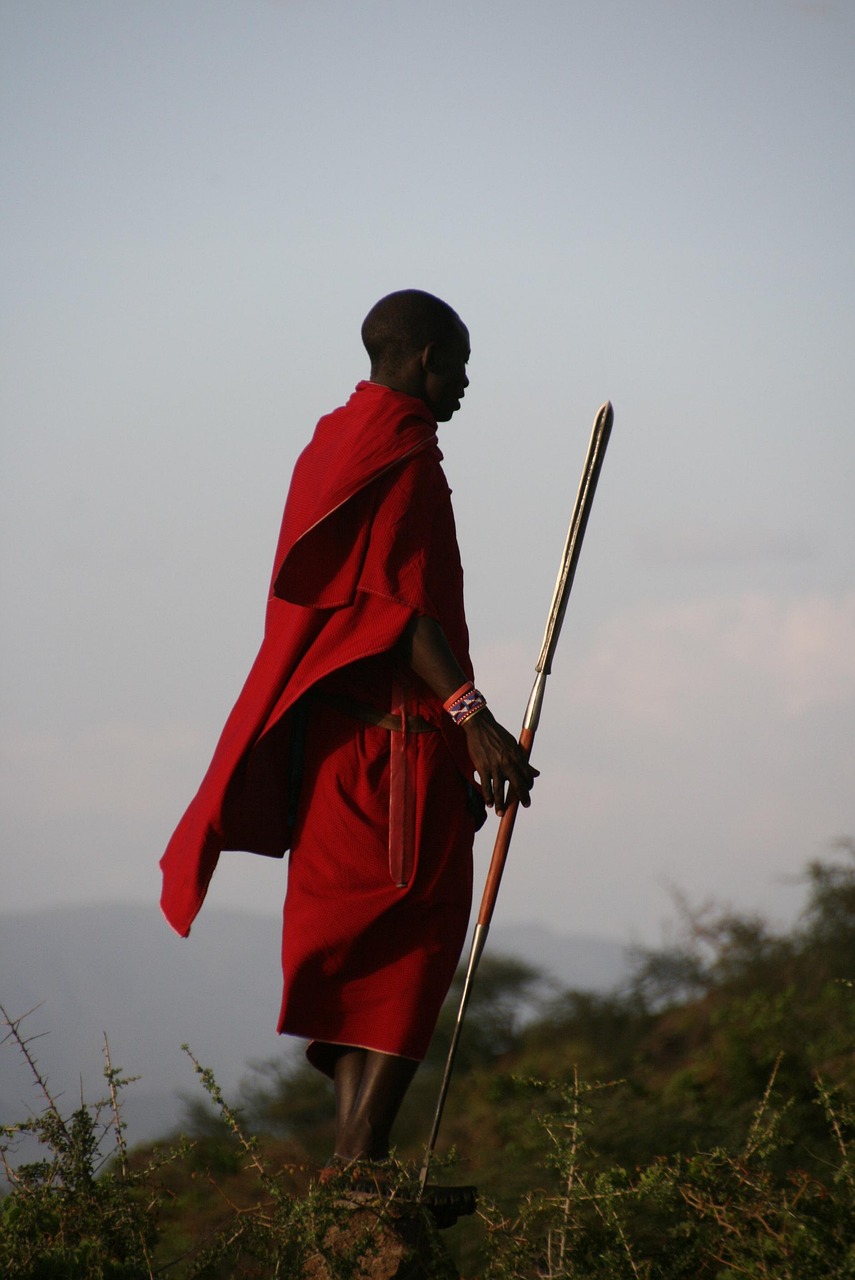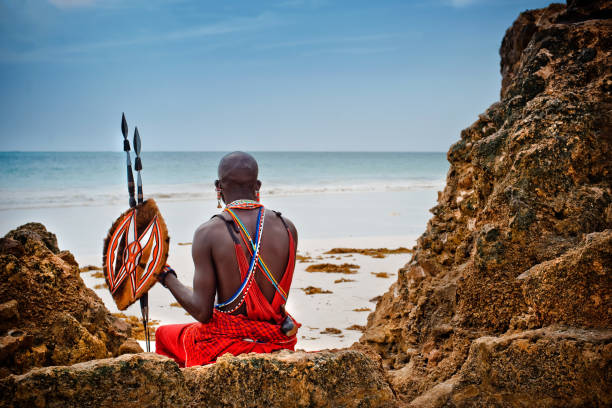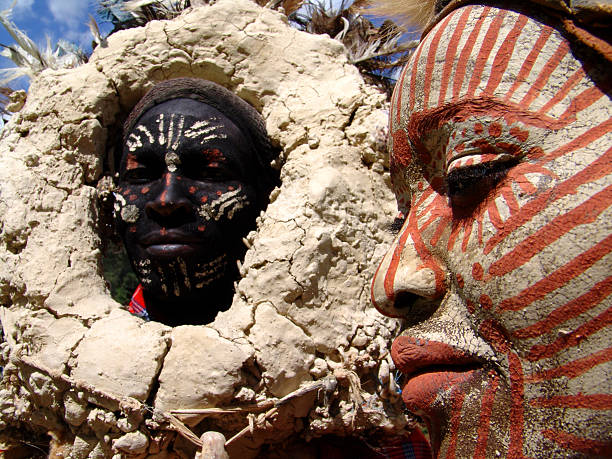Cultural Tours in Kenya - Affordable Luxury Authentic Village Visits & Traditions (2026)
I still remember my first night in a Maasai manyatta during these cultural tours in Kenya. The elder, Lekishon, handed me a gourd of fermented milk, laughed at my face when I tasted it, and then spent three hours telling me how his grandfather walked cattle across the same plains we were sitting on. No script, no performance just life with some of the tribes in Kenya. That’s what proper cultural tours in Kenya feel like. Kenya isn’t one culture; it’s 44+ living, breathing ones.
You can spend the morning watching lions in the Masai Mara and the afternoon learning how a Samburu woman beads her necklace (each colour has a meaning). You can drink tea with Kikuyu farmers on the slopes of the Aberdares one day and eat fresh fish with Luo fishermen on the shores of Lake Victoria the next. You can sit with Kamba carvers in their workshops, haggle with Swahili traders in Lamu’s stone alleys, or join a Pokot blessing ceremony under an acacia tree. These cultural safaris in Kenya aren’t “add-ons.” The cultural tours are part of what most people say changed their budget trip to Kenya with family, couples, friends or as solo travellers to Africa.
Learn to cook ugali with a mama who’s been doing it for 50 years. Also, learn the difference between a Maasai jumping dance and a Samburu one (and yes, you’ll be dragged into trying). Additionally, sleep in community-owned bandas or family homestays where the money actually stays in the villages in Kenya.
The best part? You don’t have to choose between wildlife and culture. Most of us mix both: game drives in the morning, Kenya cultural village visits in the afternoon, sundowners with warriors telling stories at night.
Why Kenya Tops the List for Cultural Tours in Africa
- Kenya is diverse and is also a cultural pressure cooker where ancient Nilotic migrations meet Bantu farming roots and Arab-Swahili trade winds. So, cultural tours in Kenya let you taste that fusion. Compare the fiery nyama choma grills of the Maasai (savannah warriors who bleed cow blood for breakfast) with the coconut-laced bhajias of Swahili elders in Lamu, whose stone towns echo 13th-century dhow sailors. Samburu herders in northern Kenya, with their ochre-red braids and cattle bells, share the same Maa language as the Maasai but live wilder, closer to the edge of the Matthews Range; think nomadic beading sessions under thorn trees.
- And the real magic? These unique cultural experiences in Kenya bleed into the wild. A Turkana village chat in Loiyangalani turns into a camel trek past fossil beds (hello, cradle of humanity). Kikuyu elders on the slopes of Mount Kenya teach coffee roasting while you spot colobus monkeys swinging overhead.
- Kenyans? They’re the secret sauce and open-hearted hosts who’ll trade stories for yours over chai. Hence, making every interaction feel like family, not a transaction. No wonder 85% of TripAdvisor reviewers call these cultural tours in Kenya “life-altering.”
If you’re tired of ticking boxes and want to come home with stories only a handful of travellers ever get, a cultural tour in Kenya is it. Small groups, private trips, budget homestays or comfortable eco-lodges at your disposal, whatever fits you. Just don’t wait too long; the good ones book up months in advance, especially June–October and the Christmas festive season.
Come and experience the Kenya cultural tours that most brochures never show you. The one that still feels real.

When to go to Kenya for the cultural tours (Best Times)
January to February and early July to October are the best times to visit Kenya cultural expeditions. So, it’s due to the comfortable and dry weather in the country during this time. Hence, this makes it easy to engage in different cultural activities in Kenya, such as village tours, like visiting the “Manyattas”. The latter are are the traditional Homestead of the Maasai people.
However, if one does not like crowds, they could opt for a Kenya cultural safari from January and February instead of July to October so that they could have a more intimate cultural experience. Additionally, these months are also good for the wildlife safaris in Kenya most especially game viewing and nature photography. So, the less dense vegetation makes it easy to spot the animals and the scenic landscapes in Kenya during this time because of the sunny weather.
What is the worst time for cultural tours in Kenya?
The period from March to May is the worst time for the cultural tours in Kenya and is usually very hectic. Additionally, transportation to different places to visit in Kenya for cultural safaris, like Lake Turkana, becomes challenging because of muddy roads. So, makes tourist vehicles in Kenya get stuck, hence slowing down transportation with such inconvenient delays.
For one who would want to combine game viewing Safari with Kenya cultural tours, such an expedition would be very hard in this period. Some trails leading to where their animals converge are flooded with water, making them hardly accessible during this time.
Meet Kenya's Standout Tribes on Your Cultural Tour
1. The Kikuyu People.
This is the largest among the tribes in Kenya. Also, the Kikuyu are famous for their exceptional skills in entrepreneurship, industry and agriculture. Additionally, the Kikuyu people of Kenya influence and dominate the political system of Kenya as they are usually the ones in top leadership positions, including the presidential spot. They value land among all the assets, and they also have unique traditions, such as the circumcision of young boys as a way of initiating them into adulthood.
2. Kalenjin.
This is a unique group as it has other subgroups, including the Nandi tribe, the Kipsigis, Pokot, Tugen and Sabot. The Kalenjin tribe in Kenya has people globally known for being Olympic award winners. Mostly in athletics, for example, Faith Kipyegon from the Kalenjin tribe is a record holder for the world Olympic 1500m run. They practice pastoral keeping and crop growing, especially the tea farms.
3. The Maasai People of Kenya.
This cultural group is found both in Kenya and Tanzania. So, the Maasai in Kenya have preserved their traditional way of living. Visit the Maasai people by booking our authentic, affordable luxury cultural tours in Kenya, the dressing, unique architecture and design of their huts (Manyattas). Also, discover how the Maasai coexist with wildlife in Masai Mara National Reserve of Kenya. Lastly, they are popular for their adumu jumping dance and for their exceptional art and skill techniques of making handicrafts, such as jewelry.
5. The Jaluo.
The Jaluo are Nilotic-speaking people who inhabit the Lake Victoria shores in Kenya. Also, they are known to be very hard-working as they participate in fishing and agriculture. They are said to have migrated from South Sudan. They do not circumcise their young men, but rather, they remove part of the forward teeth of the young man as a way of initiating them into adulthood. Lastly, the Jaluo are good at music and experts in storytelling.
6. The Swahili culture.
The Swahili are a blend of different influences in Kenya, like the Hindi, Arabs, who are usually found along the coastline of the Indian Ocean in both Kenya and Tanzania. Also, they speak the Kiswahili language. These people are known for bringing ancient times to modernity as they have cities and landmarks that portray what happened in the historical/colonial rule times to today’s day-to-day living. These historical significancies in Kenya are worth visiting during your Kenya cutural tours.


Pro Tips to Nail Your Cultural Tours in Kenya
- Dress with your legs and shoulders covered (respect begins with you)
- Take photos only with a nod, and pack a phrasebook with you; for quick smiles, say “Jambo” to Kikuyu or “Supa” to Swahili.
- Pick KPSGA-licensed operators with 4.8+ reviews (check SafariBookings). For depth, overnight in a homestay, wake to Luo fishing nets or Samburu milk rituals.
- Budget? $250–600/day, including ethical community fees that fund schools. This is a token of appreciation to these local people who further take part in the conservation of these tribes and cultures in Kenya.
Top 7 Spots for Unmissable Cultural Tours in Kenya
1. Masai Mara National Reserve
Masai Mara is known for having one of the largest wildlife diversities in Kenya, with great safari experiences like the wildebeest migration. Hence, one can combine these Kenya cultural tours with the great migration in Masai Mara. At the Masai Mara, you not only get a cultural experience in Kenya, but also an exclusive wildlife experience. The Maasai are a group of people who are found in this area. So, they co-exist with the wildlife in Masai Mara.
They are known for their large cattle keeping practices and their lively attire that they adorn with jewels, handmade and traditionally made. Some of the cultural activities in Masai Mara that tourists can carry out here include Maasai village tours. So, they include visiting the Manyattas, getting traditional fire-making lessons, and obtaining clarity about the history of the Maasai through listening to their stories, and exhibit a sense of interest when engaging with them.
2. Samburu National Reserve.
The Samburu people are the ones that are found in this reserve. Also, they have some similarities to the Maasai people in the Masai Mara, even if they are distinctly unique because of the isolation of the Samburu from modern influences. So, this is why the Samburu people are found in the semi-arid areas in northern Kenya. On the Other hand, the Maasai dwell in the easier-to-reach areas in Southern Kenya. During a Kenya cultural safari at Samburu National Reserve, one can support their local artworks by buying their crafts, such as beads, and engage in their traditional “adumu” dance.
3. The Swahili coastal region.
This culture stands out from all the other cultures because it has different influences, such as the Arab, Persian, African, and European civilizations. Cultural tours in this Kenya destination cover locations including the Mombasa Old town, Fort Jesus and Lamu town and get to participate in activities, such as the Swahili cooking classes, visit the different space markets where you will have different flavors, different ethnic groups, and influences and on top of this, you could explore the cost of Pristine beaches for exquisite outdoor beach activities.
4. Lake Turkana region.
This region is found in the northern outskirts of Kenya. Find tribes to visit for your cultural tours in Kenya like, the El Molo group, which is Kenya’s smallest ethnic tribe, and the people of Jade Sea. The people of the Jade Sea are acclimated to desert weather, and they are nomadic pastoralists. On the other hand, the El Molo people settle near the shores of. Lake Turkana, and this is why they are renowned for being fishermen and hunters who also practice food gathering. On the cultural tour in the Lake Turkana region, you can attend the popular Tobong’u Lore festival where the cultural traditions of these people are portrayed through traditional dressing and entertainment.
5. Visit the Bomas of Kenya.
This is the most accessible tourist Centre in Kenya. The Bomas is in proximity to Nairobi in Langata village. The Bomas have different settlements of the various tribes in Kenya, displaying traditional architecture. Visitors are usually entertained by the Bomas Harambee dancers. Also, explore the exhibition displays of ancient music instruments and heritage objects like traditional stools and vessels in Kenya.
6. Nabongo cultural center and shrine.
This cultural tourist destination in Kenya has ancient evidence of where the kings of the Wanga kingdom of the Luhya group were laid to rest (the burial grounds). Also, it has a display area for the different arts and crafts of the Wanga kingdom, and it is located in the western region of Kenya.
7. Mount Kenya National Park.
Mount Kenya has cultural sacred grounds like the Gura falls and the Nanyuki Mau Mau cave for the tribes most especially the Kikuyu and Embu people. These tribes around Mount Kenya are known for their cattle keeping and farming practices, most especially coffee.




